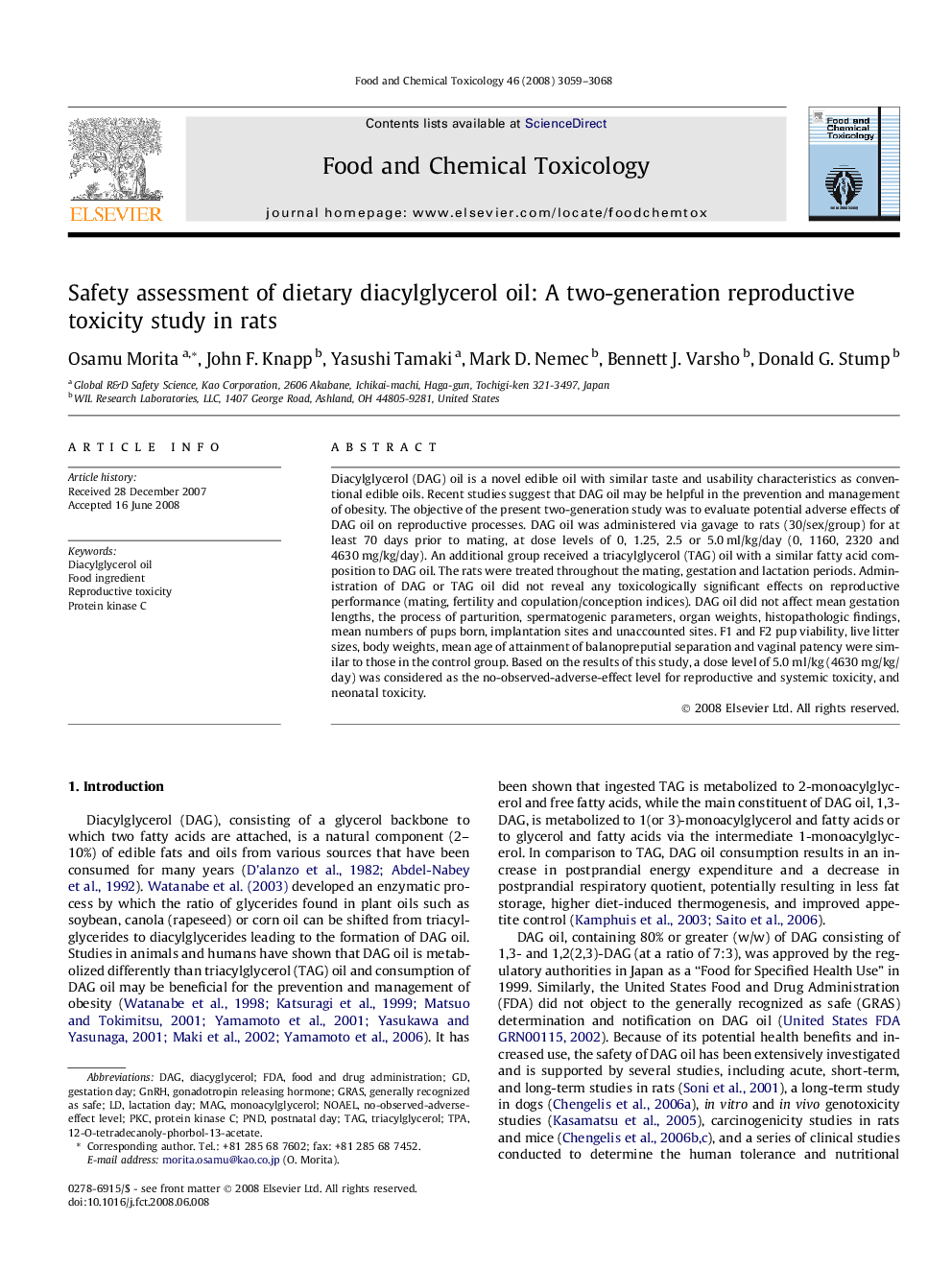| کد مقاله | کد نشریه | سال انتشار | مقاله انگلیسی | نسخه تمام متن |
|---|---|---|---|---|
| 2586903 | 1130913 | 2008 | 10 صفحه PDF | دانلود رایگان |

Diacylglycerol (DAG) oil is a novel edible oil with similar taste and usability characteristics as conventional edible oils. Recent studies suggest that DAG oil may be helpful in the prevention and management of obesity. The objective of the present two-generation study was to evaluate potential adverse effects of DAG oil on reproductive processes. DAG oil was administered via gavage to rats (30/sex/group) for at least 70 days prior to mating, at dose levels of 0, 1.25, 2.5 or 5.0 ml/kg/day (0, 1160, 2320 and 4630 mg/kg/day). An additional group received a triacylglycerol (TAG) oil with a similar fatty acid composition to DAG oil. The rats were treated throughout the mating, gestation and lactation periods. Administration of DAG or TAG oil did not reveal any toxicologically significant effects on reproductive performance (mating, fertility and copulation/conception indices). DAG oil did not affect mean gestation lengths, the process of parturition, spermatogenic parameters, organ weights, histopathologic findings, mean numbers of pups born, implantation sites and unaccounted sites. F1 and F2 pup viability, live litter sizes, body weights, mean age of attainment of balanopreputial separation and vaginal patency were similar to those in the control group. Based on the results of this study, a dose level of 5.0 ml/kg (4630 mg/kg/day) was considered as the no-observed-adverse-effect level for reproductive and systemic toxicity, and neonatal toxicity.
Journal: Food and Chemical Toxicology - Volume 46, Issue 9, September 2008, Pages 3059–3068